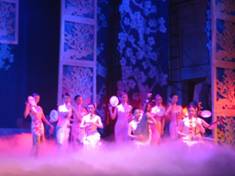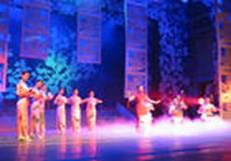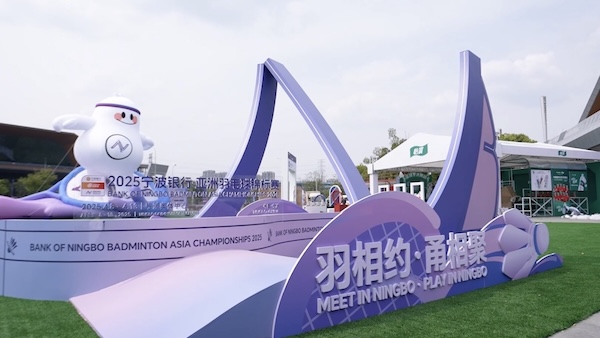Siming Nanci (Ningbo Lyrics)
Siming Nanci, also known as Ningbo Lyrics, is popularly known as "Ningbo scholarly story-telling". Due to its ornate language and graceful melodies, Siming Nanci is usually played at happy occasions such as the birthday and wedding banquets.
It is said that when Emperor Qianlong of the Qing Dynasty (AD 1644-1911) visited Ningbo, he enjoyed Siming Nanci and gave high praise to it. After returning to Beijing, the emperor brought a team of Siming Nanci artists home to give more performances.


Siming Nanci is a performance art that combines singing, playing, reading, speaking and showmanship. Leading performers have skills in speaking, singing, and can playing the xianzi (a three-stringed plucked instrument). Melodies commonly used in Siming Nanci include Ci, Fu, Pinghu, and Jinpinghu.
Siming Nanci boasts nice tunes and its singing forms are mostly in 7 word sentences. Instrumental performances are often given at the beginning of shows or after breaks to quiet the audience. Siming Nanci melodies are often adapted by south Yangzi string and pipe ensembles, such as the Sihe Satisfactions and Triumph Order. Major instruments include the xiao, sheng, dulcimer, Chinese fiddle, pipa and xianzi. Taking full advantages of their respective instruments, performers play freely but focus on the theme. Music experts on Chinese folk music at home and abroad offer high praise for Siming Nanci.
The singing performance of Siming Nanci has many forms, such as "Single-instrument Performance" (singing and playing the three-string instrument by one person), "Two-instrument performance" (with dulcimer performance added), "Three-instrument performance" (with pipa performance added), and "Five-instrument performance" (with Chinese fiddle and xiao performance added).
A list of classic performances of Siming Nanci includes Pearl Tower, Emerald Dragonflies, Double Pearl Phoenix, Hidden Dragon Bracelet, Ten Beauties Portraits and The Romance of the Western Chamber.
Siming Nanci was approved by the State Council to be listed among the second batch of national intangible cultural heritage on June 7, 2008.

 Ningbo seabird project seeks international volunteers
Ningbo seabird project seeks international volunteers  Jakub's journey: From shipyard to sea
Jakub's journey: From shipyard to sea  Badminton Asia COO applauds Ningbo
Badminton Asia COO applauds Ningbo 


